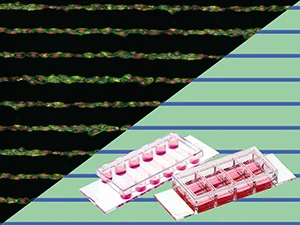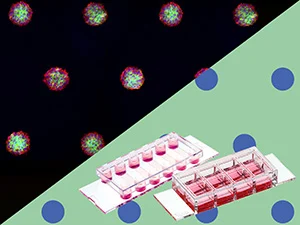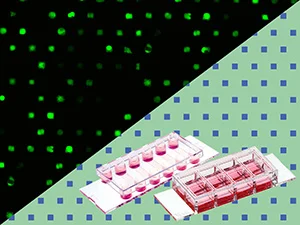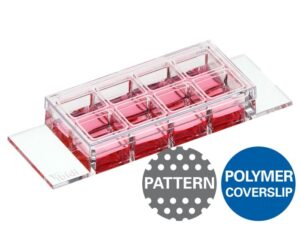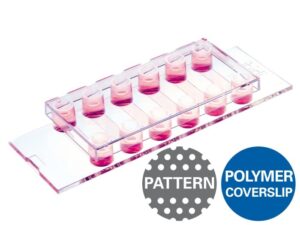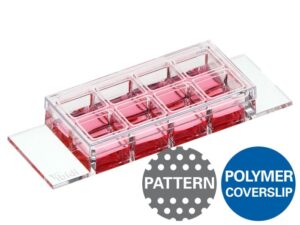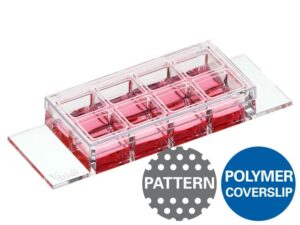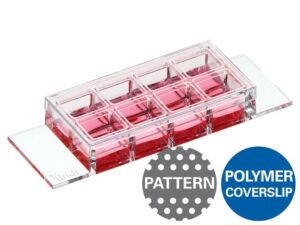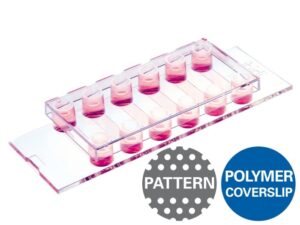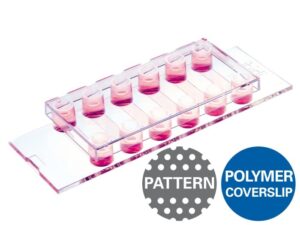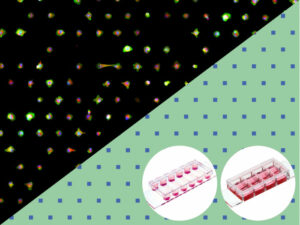
Micropatterning Slides
Understanding the Key Elements of µ-Patterns
Every ibidi µ-Pattern is designed with precise spatial control, ensuring reproducible cell adhesion and organization. Let’s break down the essential pattern components:
- Shape – Defines the geometry of the attachment area (e.g., cir = circle)
- Size – The diameter or width of the attachment area, measured in micrometers (µm) (e.g., 500 µm)
- Pitch – The spacing between adjacent shapes, measured from center to center (e.g., pit1000 = 1000 µm)
- Layout – The overall pattern arrangement, determining how attachment areas are structured (e.g., a hexagonal layout)
- Surface – The cell attachment surface where cells adhere, made of ibiTreat for optimal cell growth
µ-Patterning Applications
Explore the numerous applications of micropatterning, such as
- Precise control of single-cell shape and adhesion
- Directed differenatiation via shape/force modulation
- Homogenize cell shapes and behaviors to reduce experimental noise
- Standardized spheroid / organoid culture
- New approach methodologies (NAM) for toxicity testing
